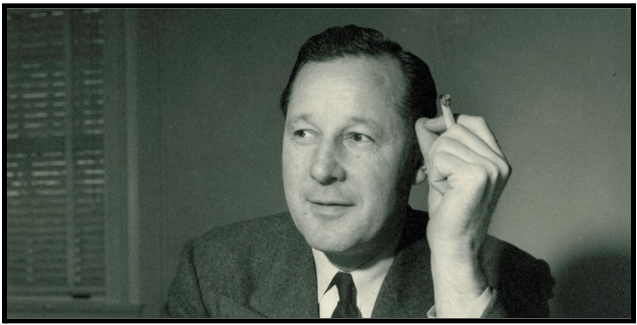Clear, simple, memorable phrases so others will repeat your Big Idea for you.
Talking Next-Gen Energy
A proverb is a short sentence based on long experience.
– Miguel de Cervantes
In 1954, Lewis Strauss gave a speech. As Chairman of the U.S. Atomic Energy Commission, he spoke to the National Association of Science Writers.
In his remarks, Strauss addressed the challenges of communicating atomic advancements to the public and the important role science writers played. He covered security, newly declassified findings, the end of wars, and the possibilities of the future.
From this speech, a single line made it into the zeitgeist.
“Energy too cheap to meter.”
He only mentioned this idea once. Yet, it was picked up and repeated by supporters and critics alike. Media outlets and science writers wondered at the possibilities. Today, the phrase continues to capture our imagination.
Why does a phrase like this survive for nearly 70 years?
“Too cheap to meter” became a proverb. A clear, simple, memorable phrase that captures a Big Idea.

A proverb boils all the stories, facts, data, talking points, and examples down to their essence. Proverbs help listeners understand and remember the Big Idea.
A good proverb is also wise. It is not a banal talking point. It captures your Big Idea in a way that resonates with your audience and shares an insight.
Consider these examples:
- “Imagination is more important than knowledge.” Albert Einstein stresses the importance of creative thinking over rote memorization.
- “We are made of star stuff.” This simple statement from Carl Sagan captures the profound idea that the elements composing our bodies were forged in the cores of stars.
- “Mathematics is the queen of the sciences.” Carl Friedrich Gauss, often referred to as the “Prince of Mathematicians,” speaks to the central role of mathematics in scientific disciplines.
It takes effort and iteration to develop a quality proverb. Here are examples and tactics to help.
1. Be clear.

In 1953, a year before Lewis Strauss’s remarks, President Eisenhower addressed the United Nations. He laid out the current situation of nuclear armament and proposed a path forward.
More and more countries were developing nuclear weapons, but Eisenhower had an optimistic message. The incredible scientific and engineering advances of the last decade could be used for peace.
He created a dichotomy: atoms for war or atoms for peace?
The “atoms for peace” proverb is clear. It connected directly to Eisenhower’s Big Idea. “We can use this new technology to make the entire world more peaceful, healthier, more comfortable, and safer.”
This is the first and most important principle of your proverb. It must be clear. It must capture and illuminate your Big Idea.
Without a clear connection to your Big Idea, what’s the point in sharing your proverb? The goal is to get your Big Idea into listeners’ heads. Not to score takedowns on Twitter by confusing people.
On a recent trip back from Guatemala, I saw a public health advertisement while waiting at customs. I didn’t get the chance to grab a picture, so I recreated the ad below.

The proverb here is “don’t forget your hat.” It was compelling enough that it got me to stop and look at it for about a minute. Unfortunately, I spent that entire minute trying to figure out what it was talking about.
What does advice to seek medical attention have to do with forgetting my hat? It feels more like a sun exposure recommendation than anything to do with illness.
It finally hit me that “hat” was an acronym for “health after travel.” The message, or Big Idea, was “keep an eye out for sickness after you’ve traveled internationally.”
But, a mnemonic device is not the same as a proverb. It can’t stand alone. It doesn’t deliver any meaning to your audience and might just confuse them.
On the other hand, someone who heard the phrase “atoms for peace” could describe with some accuracy the Big Idea behind it. Even more so if they heard a full speech using that proverb.
Gold standard: a listener will understand the gist of your Big Idea, even if they’ve only heard your proverb.
Use these tactics to make your proverb clear:
- Remove jargon. I.e. any word that a relative at Thanksgiving dinner wouldn’t know. For example, “economic prosperity” is jargon for “people have more money.”
- Cut extra words. Adverbs, words ending in -ly, are the most common offender. These are bald-faced qualifiers and have no place in your proverb.
- Use active voice. Passive voice obscures the meaning and action. Avoid words that end in “ing”.
Any proverb you craft will be clear to you. Your brain built the connection between your proverb and Big Idea, so of course you can see it! This is the curse of knowledge. And it’s difficult to overcome.
Test your proverb out on a variety of people to improve its clarity. If someone gets confused, ask them why. Listen to them and iterate based on their feedback.
Incidentally, President Eisenhower never used the phrase “atoms for peace” in his speech although it was his title.
At least in this, you can do better than Eisenhower. Use your proverb every opportunity you get. The more you use it, the more it will stick in your audience’s head.
2. Be simple.

Nicholas Negroponte is credited with coining the phrase “move bits, not atoms” in his 1995 book Being Digital. This was early in the excitement to invest and build in the digital space. Tools like Paypal, Facebook, and ChatGPT have been built on this concept.
Today, this phrase is being turned around. Since Peter Thiel popularized the atoms vs bits distinction, more and more, smart people are organizing around this idea.
This proverb “atoms vs bits” has simplified the broader question of how to invest time and money into three words. And no word is more than five letters.
Simplicity in communication is the aim. Your thinking and your ideas are complex. Boiling these ideas down into a simple phrase is the hallmark of clear understanding.
If you cannot explain something in simple terms, you don’t understand it.
– Richard Feynman
Use these tactics to simplify your proverb:
- Use short, grade-school-level words. The Hemingway App is a great tool to test the reading level of your proverb.
- Keep it tight. Strive for fewer than 7 words.
- Convey a single thought. Avoid compound sentences like the plague. If your proverb needs to have multiple parts, go back to your Big Idea. Clarify it until you have a single, overarching point.
Be careful to maintain a positive message as you simplify. While a message of “atoms, not bits” may speak to your tribe, it alienates another tribe. Be intentional with this kind of either/or.
As always, focus on bridge-building rather than drawing arbitrary lines in the sand.
3. Be memorable.

Posters, coffee mugs, t-shirts, socks. Imagine if someone could, with a couple of clicks, buy one of these with your proverb plastered on it. And not because you’re the one selling it.
Well, that’s what has happened with a proverb popularized by Sarah Palin during her 2008 vice presidential campaign. Drill, baby, drill! She uses it to advocate for more oil and natural gas drilling.
Tim Latimer, CEO of Fervo Energy, is bringing back the phrase to advocate for more geothermal. That we can tap into tremendous natural and renewing heat sources within the Earth’s crust to provide abundant, emissions-free energy.
Palin and Latimer’s proverb is memorable because it has a beat to it. It uses repetition in the word “drill.” Plus, the casual language “baby” is unexpected coming from a Presidential candidate (in 2008) or a CEO.
Once you have a clear, simple proverb, try out some of these tactics to make it memorable.
- Use repetition. Repeat words and sounds. “Crisis? What Crisis?” “Keep calm and carry on.” Or a personal favorite: “absolute power corrupts absolutely.”
- Make it tangible. Use language your audience can see, feel, taste, or touch. “Wrap the pill in some tasties” reminds speakers to use stories to explain their Big Idea. You can imagine needing to give a dog (i.e. your audience) a pill (your Big Idea) and wrapping it in cheese (your proverb or story) to make it delicious.
- Be unexpected. Use opposites or break a pattern. “United we stand, divided we fall.” “Take the path of resistance.” The change makes your listener pause. The more your listeners stop and consider your words rather than gloss over them, the more likely they will remember.
If you’re having fun with these stylistic tactics, get your hands on a copy of Mark Forsyth’s Elements of Eloquence. It’s packed with more techniques to make your speaking and writing more engaging and memorable.
***
What are your proverbs? What will people remember about you and your talk an hour later? A day? A year? A century?
Don’t just share your Big Idea. Make it matter. Craft a proverb to capture the essence of your point.
When an advisor first suggested the phrase “yes we can,” Barack Obama thought it was too corny. He didn’t want to use it.
Obama asked his wife, who was sitting on the stairs watching his ad taping. Michelle shook her head. “Not corny.”
This proverb became the leading idea of Obama’s campaign. A rallying cry that carried him all the way to the White House.
Follow Michelle Obama’s lead. Accept and lean into proverbs that bring your Big Idea to life. Help your audience understand and remember.
Because if understanding and remembering isn’t the point, why are you talking?
***
For a great example of what to do, check out Packy McCormick’s and Julia DeWahl’s new podcast Age of Miracles.
In the first episode, they demonstrate many principles of good communication. Including at least using two proverbs. “More energy means more human flourishing.” “Megatons for megawatts.”




